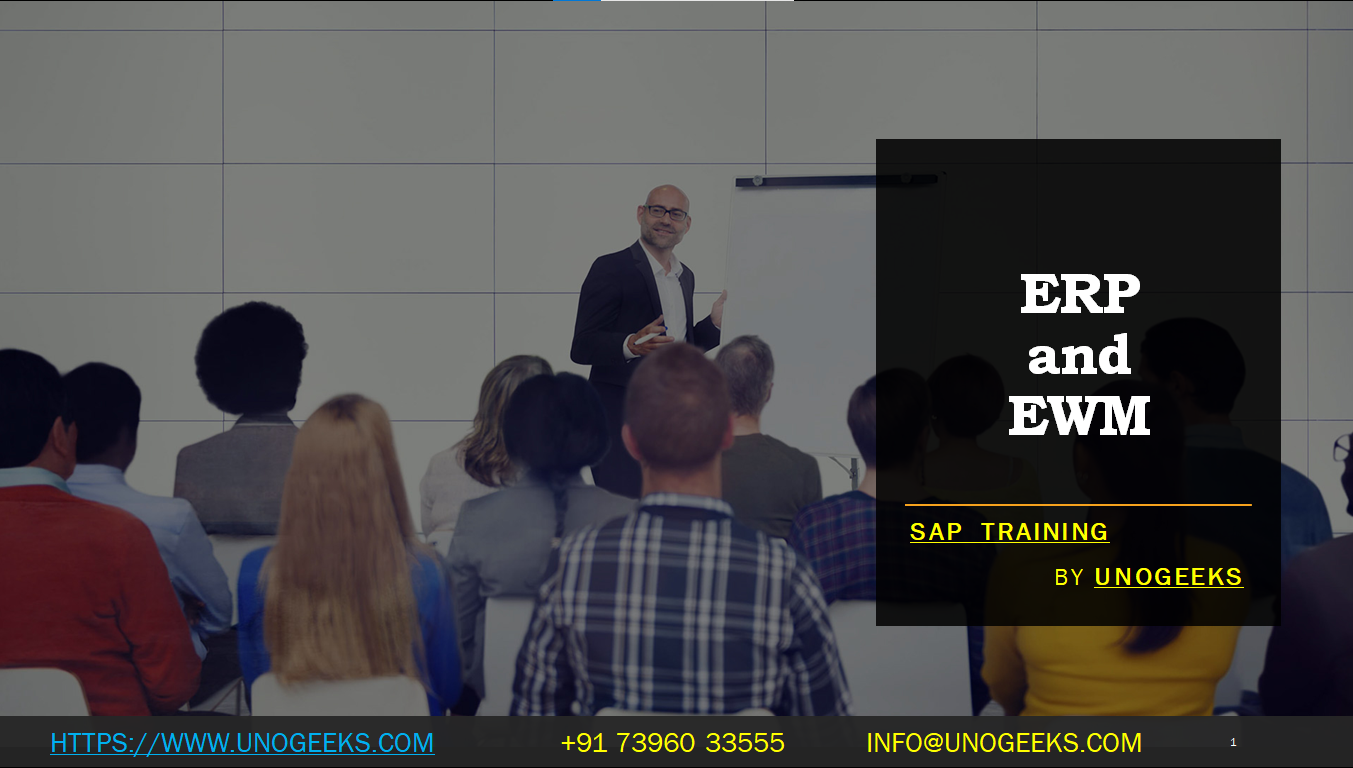ERP and EWM
ERP and EWM: A Supply Chain Powerhouse
In today’s complex supply chain landscape, a standalone warehouse management system (WMS) might not be enough. Integrating your WMS or full-fledged Extended Warehouse Management (EWM) solution with your Enterprise Resource Planning (ERP) system creates a powerful foundation for efficiency and visibility. Let’s focus on how SAP EWM elevates ERP capabilities.
Understanding the ERP-EWM Connection
ERP (like SAP S/4HANA): The heart of your business. It manages core processes like procurement, sales, financials, production planning, and provides a top-level view of inventory.
EWM (like SAP EWM): The warehouse specialist. It orchestrates detailed warehouse layout, intricate stock placement/retrieval strategies, labor management, yard activities, and more.
How ERP and EWM Collaborate
ERP and EWM engage in a continuous data exchange, mainly through two methods:
Core Interface (CIF): Handles master data. This ensures that product data, customer information, vendor details, etc., are in perfect sync between the systems.
Queued Remote Function Calls (qRFCs): Designed for transactional data:
- Inbound deliveries (ERP to EWM): Signals incoming goods to the warehouse, kickstarting the receiving process.
- Outbound deliveries (ERP to EWM): Triggers order picking, packing, and shipping activities.
- Stock transfers (within EWM): Handles stock movements between warehouses managed by EWM.
Benefits of ERP-EWM Integration
- Eliminating Silos: Data consistency between warehouse and the rest of your business prevents costly discrepancies and manual reconciliations.
- End-to-End Visibility: Track inventory and orders seamlessly from the moment they enter the supply chain to final delivery.
- Real-time Decision-Making: Access to accurate, up-to-the-minute warehouse data from your ERP facilitates better planning and quicker responses to changes.
- Optimized Operations: Automation of data exchange eliminates manual updates, freeing up time and reducing errors.
Use Cases
- Order Fulfillment: A customer order triggers the ERP to instruct EWM, ensuring the right items are pulled, packed, and shipped accurately and on time.
- Production Planning: ERP’s demand and production planning features use real-time stock information from EWM to make informed decisions.
- Inventory Replenishment: EWM monitors stock levels and can trigger automatic replenishment orders in the ERP when inventory falls below set thresholds.
The Integrated Advantage
The tight integration between ERP and EWM enables organizations to orchestrate their supply chains with increased precision, efficiency, and agility. If you manage complex warehouse operations and utilize SAP as your enterprise backbone, understanding how ERP and EWM work together is key to unlocking your full supply chain potential.
Conclusion:
Unogeeks is the No.1 IT Training Institute for SAP EWM Training. Anyone Disagree? Please drop in a comment
You can check out our other latest blogs on SAP EWM here – SAP EWM Blogs
You can check out our Best In Class SAP EWM Details here – SAP EWM Training
Follow & Connect with us:
———————————-
For Training inquiries:
Call/Whatsapp: +91 73960 33555
Mail us at: info@unogeeks.com
Our Website ➜ https://unogeeks.com
Follow us:
Instagram: https://www.instagram.com/unogeeks
Facebook:https://www.facebook.com/UnogeeksSoftwareTrainingInstitute
Twitter: https://twitter.com/unogeek
